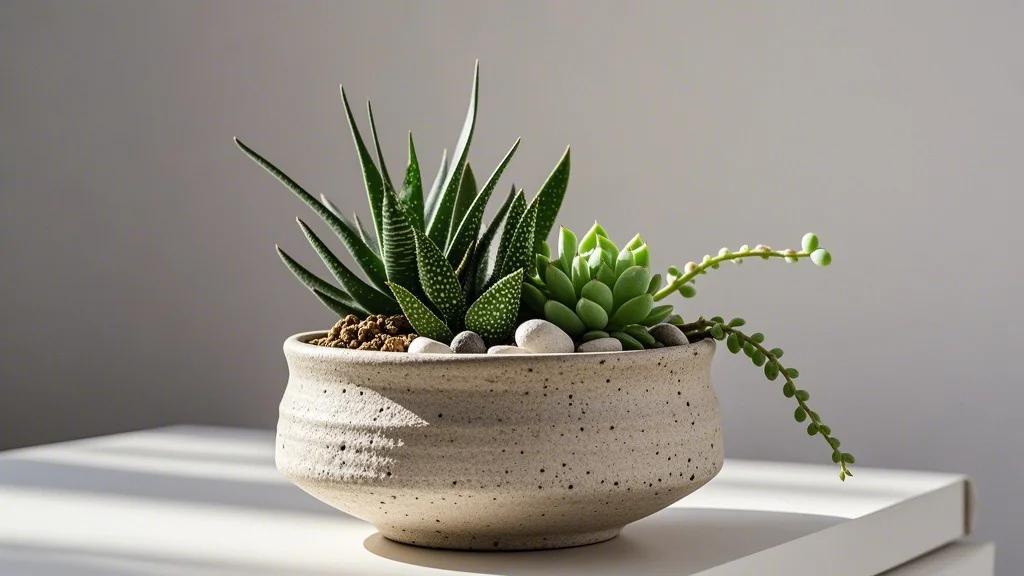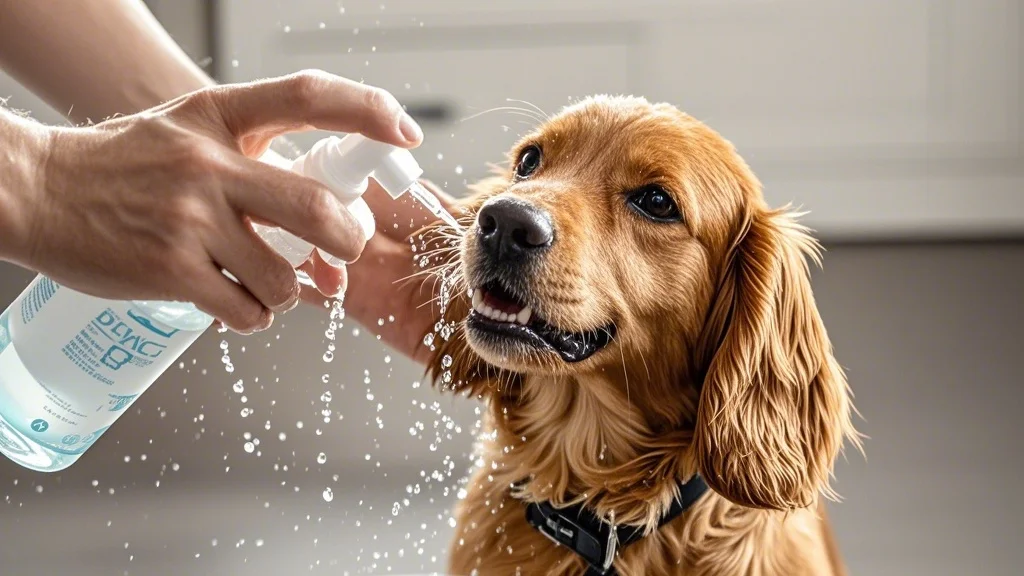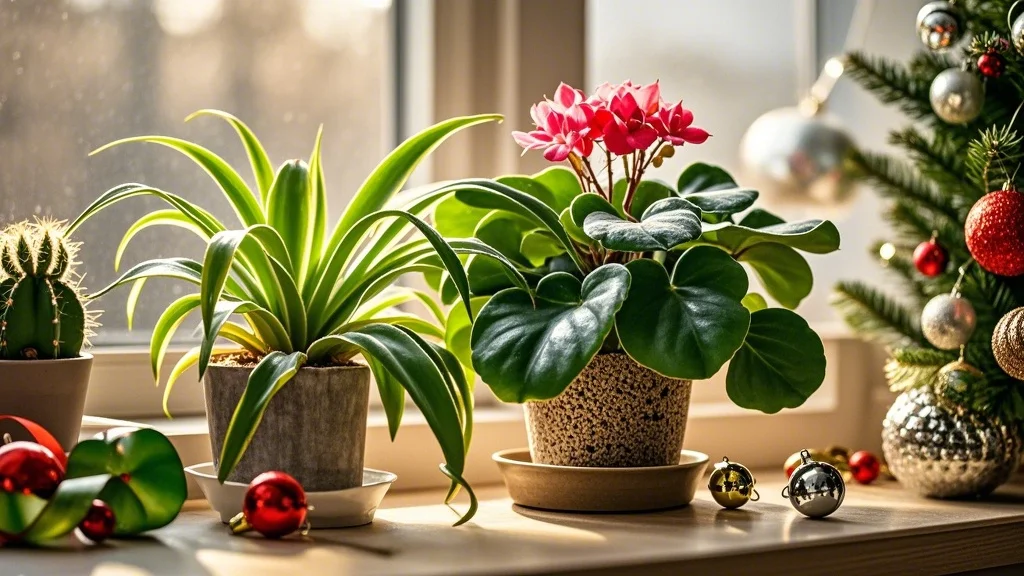As pet owners and plant enthusiasts, we often find ourselves caught between our love for greenery and concern for our furry friends’ safety. The good news is that you don’t have to choose between a lush indoor garden and a pet-friendly home. The American Society for the Prevention of Cruelty to Animals (ASPCA) has compiled an extensive list of plants that are officially recognized as non-toxic to cats and dogs. In this comprehensive guide, we’ll explore a variety of ASPCA-approved plants that can beautify your living space while keeping your pets safe.
Contents
- 1 Why Choose ASPCA-Approved Plants?
- 2 Top ASPCA-Approved Plants for Your Home
- 2.1 1. Spider Plant (Chlorophytum comosum)
- 2.2 2. Boston Fern (Nephrolepis exaltata)
- 2.3 3. African Violet (Saintpaulia)
- 2.4 4. Bamboo Palm (Chamaedorea seifrizii)
- 2.5 5. Calathea (Various species)
- 2.6 6. Peperomia (Various species)
- 2.7 7. Parlor Palm (Chamaedorea elegans)
- 2.8 8. Echeveria (Various species)
- 2.9 9. Haworthia (Various species)
- 2.10 10. Christmas Cactus (Schlumbergera)
- 3 Tips for Maintaining a Pet-Friendly Indoor Garden
- 4 The Benefits of Pet-Safe Plants
- 5 Conclusion
Why Choose ASPCA-Approved Plants?
The ASPCA is a trusted authority on animal welfare, and their list of non-toxic plants is based on extensive research and veterinary expertise. By selecting plants from this list, you can:
- Ensure your pets’ safety
- Reduce anxiety about potential plant-related emergencies
- Create a harmonious environment for both plants and pets
- Enjoy the benefits of indoor gardening without compromise
Top ASPCA-Approved Plants for Your Home
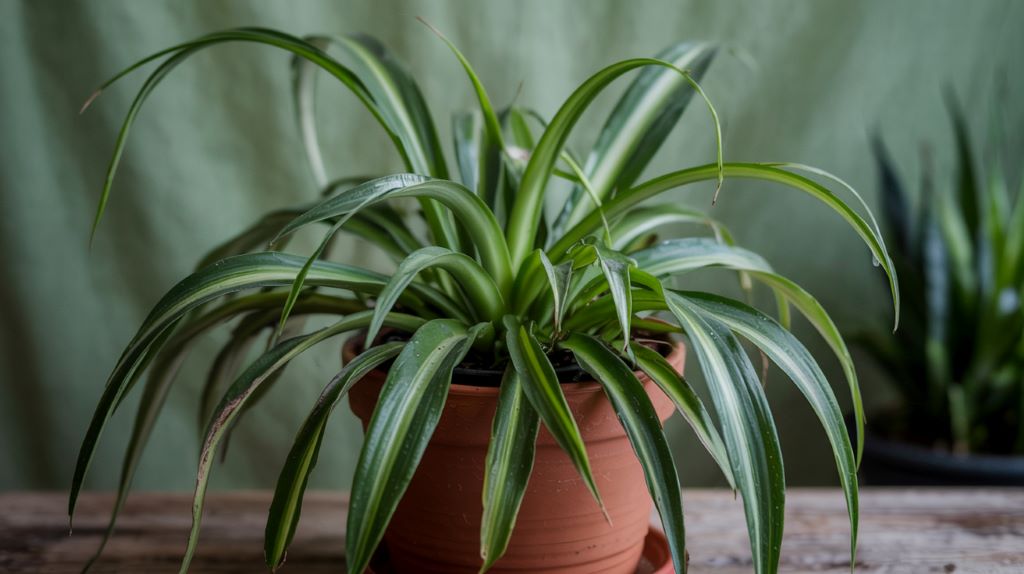
1. Spider Plant (Chlorophytum comosum)
The spider plant is a classic choice for pet-friendly homes. Its long, arching leaves and easy care requirements make it a favorite among urban gardeners.
Key Features:
- Air-purifying properties
- Tolerates low light conditions
- Produces “spiderettes” that can be propagated easily
2. Boston Fern (Nephrolepis exaltata)
With its lush, feathery fronds, the Boston fern adds a touch of elegance to any room while being completely safe for pets.
Key Features:
- Thrives in humid environments
- Excellent air purifier
- Prefers indirect light
3. African Violet (Saintpaulia)
These compact, flowering plants bring a pop of color to your space without posing any threat to your furry companions.
Key Features:
- Blooms in various colors
- Prefers moderate to bright indirect light
- Relatively low maintenance
4. Bamboo Palm (Chamaedorea seifrizii)
Also known as the reed palm, this plant is an excellent choice for adding a tropical feel to your pet-friendly home.
Key Features:
- Effective air purifier
- Thrives in low to moderate light
- Can grow quite tall, making it a striking focal point
5. Calathea (Various species)
Calatheas, with their striking leaf patterns, are a safe and stylish choice for pet owners.
Key Features:
- Wide variety of patterns and colors
- Prefers humid environments
- Leaves move throughout the day, earning them the nickname “prayer plants”
6. Peperomia (Various species)
These compact, low-maintenance plants come in a variety of leaf shapes and colors, all safe for pets.
Key Features:
- Tolerates low to moderate light
- Comes in trailing and upright varieties
- Easy to propagate
7. Parlor Palm (Chamaedorea elegans)
This small palm is perfect for adding a tropical touch to your home without worrying about your pets.
Key Features:
- Tolerates low light conditions
- Slow-growing and compact
- Excellent air purifier
8. Echeveria (Various species)
These beautiful succulents are not only pet-safe but also drought-tolerant and low-maintenance.
Key Features:
- Comes in a variety of colors and shapes
- Requires minimal watering
- Prefers bright, indirect light
9. Haworthia (Various species)
Another pet-safe succulent option, Haworthias are small, attractive plants that are perfect for windowsills or desk tops.
Key Features:
- Tolerates low light conditions
- Requires minimal watering
- Comes in various textures and patterns
10. Christmas Cactus (Schlumbergera)
This flowering succulent is a festive addition to any pet-friendly home, blooming in late fall or early winter.
Key Features:
- Produces colorful blooms
- Long-lived with proper care
- Prefers bright, indirect light
Tips for Maintaining a Pet-Friendly Indoor Garden
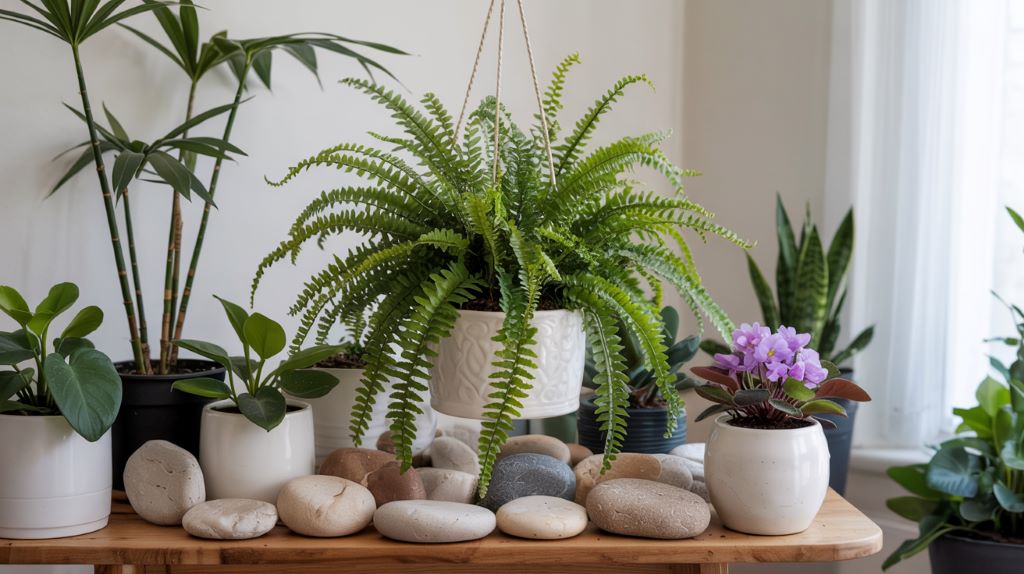
- Regular Monitoring: Even with ASPCA-approved plants, it’s essential to keep an eye on your pets’ behavior around them. Some animals may still try to chew on leaves or dig in soil.
- Proper Placement: Position plants out of easy reach of curious pets, especially if they tend to knock things over or dig in pots.
- Use Pet-Safe Fertilizers: When caring for your plants, opt for organic, pet-safe fertilizers to avoid any potential toxicity.
- Address Soil Digging: If your pet likes to dig in plant pots, try covering the soil with large pebbles or decorative moss to deter this behavior.
- Provide Pet-Friendly Alternatives: Offer your pets their own plants to nibble on, such as cat grass or catnip, to redirect their attention from your houseplants.
- Regular Cleaning: Keep fallen leaves and debris cleaned up to prevent pets from ingesting them.
- Gradual Introduction: When bringing new plants into your home, introduce them gradually and supervise your pets’ interactions with them.
The Benefits of Pet-Safe Plants
Incorporating ASPCA-approved plants into your home offers numerous benefits:
- Improved Air Quality: Many of these plants are excellent air purifiers, removing toxins and improving indoor air quality.
- Stress Reduction: The presence of plants has been shown to reduce stress and improve mood for both humans and pets.
- Natural Humidifiers: Some plants, like ferns and palms, can help increase humidity levels, benefiting both you and your pets.
- Educational Opportunities: Growing pet-safe plants can be a great way to teach children about plant care and pet safety.
- Aesthetic Appeal: These plants come in a wide variety of shapes, sizes, and colors, allowing you to create a beautiful, pet-friendly indoor garden.
Conclusion
Creating a pet-friendly indoor garden doesn’t mean sacrificing style or variety. With the wide range of ASPCA-approved plants available, you can cultivate a lush, beautiful home environment that’s safe for your furry friends. From the graceful arches of a spider plant to the vibrant blooms of an African violet, these non-toxic options offer something for every taste and skill level.
Remember, while these plants are officially recognized as safe, it’s always best to supervise your pets and consult with your veterinarian if you have any concerns. By choosing ASPCA-approved plants and following proper care guidelines, you can enjoy the best of both worlds – a thriving indoor garden and happy, healthy pets.
Whether you’re a seasoned plant parent or just starting your indoor gardening journey, these pet-safe options provide a perfect foundation for creating a harmonious, green living space that both you and your pets can enjoy. So go ahead, let your green thumb flourish, and watch as your home transforms into a pet-friendly urban oasis.

